Subscriber Exclusive
Pick a Palette: The North Road Hat and Tam O’Shanter
Boost your colorwork confidence with 4 tips for knitting Shetland-inspired hats.
Boost your colorwork confidence with 4 tips for knitting Shetland-inspired hats. <a href="https://farmfiberknits.com/north-road-hat-and-tam-o-shanter/">Continue reading.</a>
https://farmfiberknits.com/cdn-cgi/image/format=auto/https://www.datocms-assets.com/101500/1706049022-north-road-and-tam-header.jpg?auto=format&w=900
Shetland’s distinctive color patterns—sometimes using bold contrast, sometimes subtle shading—continue to catch our knitters’ attention. Not only is Shetland-style knitwear beautiful, but the color-stranding technique used creates an exceptionally warm and hardwearing fabric.
Choosing colors for the stranded motifs we often refer to as Fair Isle can be the most intimidating aspect of trying one of these patterns yourself. Here are a few tips:
Simple Palettes
Just because a pattern calls for five or seven colors doesn’t mean you have to use that exact number. Often, you can easily reduce the number of colors needed by grouping pattern colors together or grouping background colors together. For example, check out this chart section for the Tam O’Shanter design by Eileen Lee:
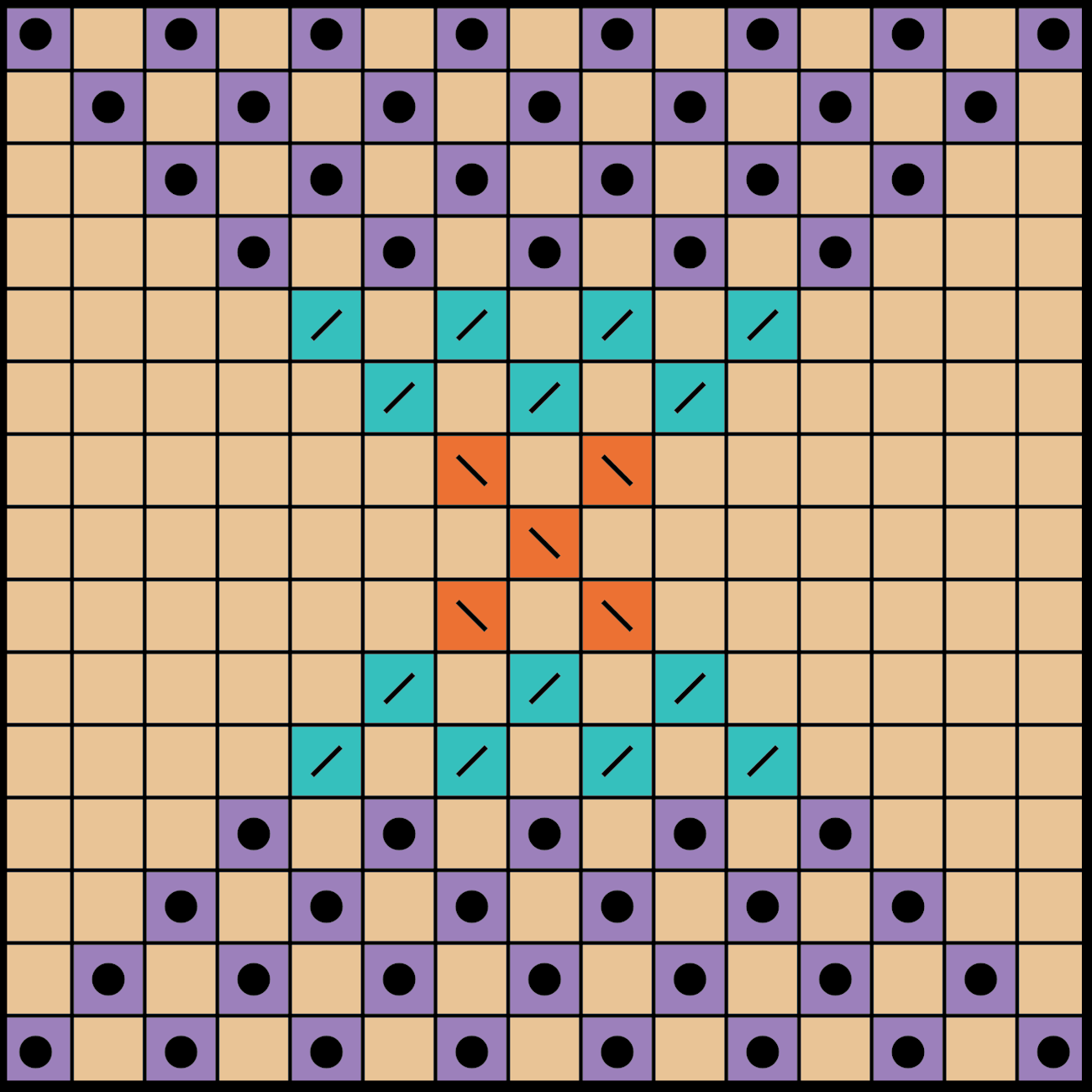
The background is shown with cream blocks, and the pattern is purple, turquoise, and orange. All of the pattern blocks could be converted to purple. This reduces the complexity of the pattern, which might make it feel more manageable to knit—or to find enough yarn colors you like.
SUBSCRIBER EXCLUSIVE
Shetland’s distinctive color patterns—sometimes using bold contrast, sometimes subtle shading—continue to catch our knitters’ attention. Not only is Shetland-style knitwear beautiful, but the color-stranding technique used creates an exceptionally warm and hardwearing fabric.
Choosing colors for the stranded motifs we often refer to as Fair Isle can be the most intimidating aspect of trying one of these patterns yourself. Here are a few tips:
Simple Palettes
Just because a pattern calls for five or seven colors doesn’t mean you have to use that exact number. Often, you can easily reduce the number of colors needed by grouping pattern colors together or grouping background colors together. For example, check out this chart section for the Tam O’Shanter design by Eileen Lee:

The background is shown with cream blocks, and the pattern is purple, turquoise, and orange. All of the pattern blocks could be converted to purple. This reduces the complexity of the pattern, which might make it feel more manageable to knit—or to find enough yarn colors you like. [PAYWALL]
All About Contrast
Generally, the area of the pattern with the highest contrast will be the place your eye settles. You can explore completely different visual effects by creating high contrast and low contrast in different areas of the design.
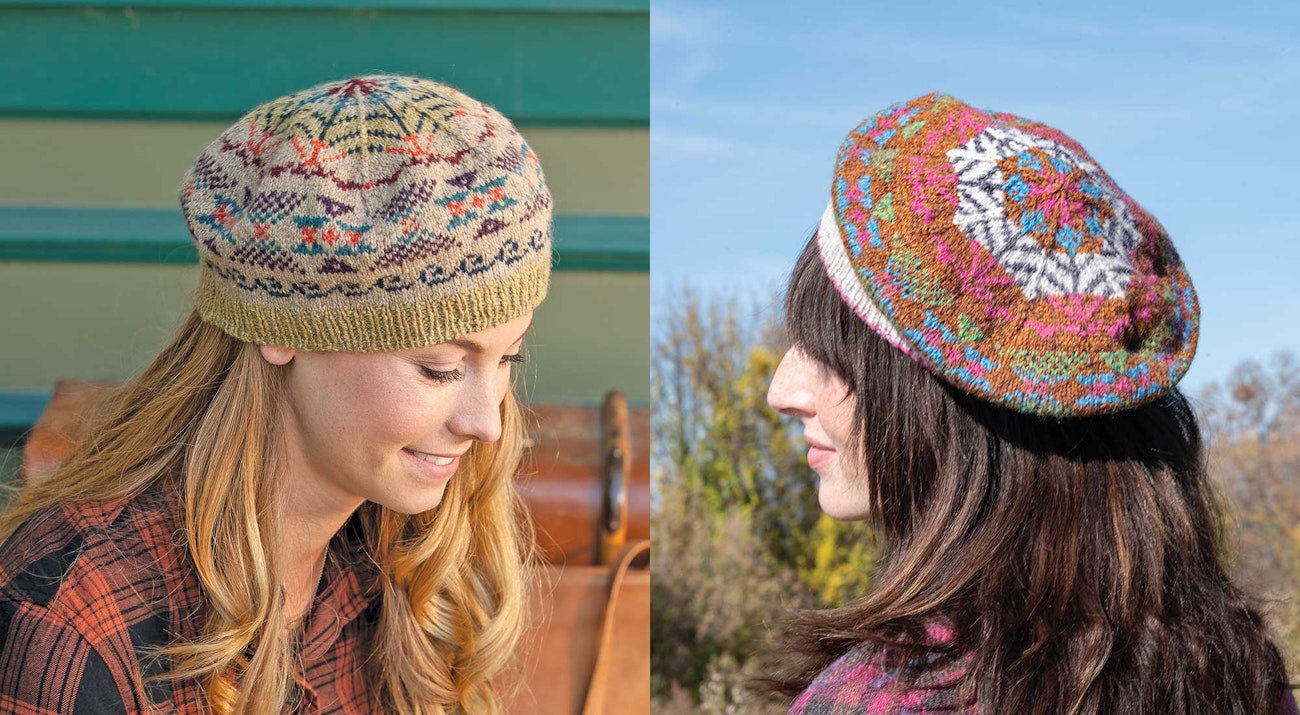 At left, the background contrasts with all of the pattern colors; at right, the contrast between pattern and background colors varies. Photo at left by Joe Coca; at right by Gale Zucker
At left, the background contrasts with all of the pattern colors; at right, the contrast between pattern and background colors varies. Photo at left by Joe Coca; at right by Gale Zucker
The Woolen Way
Handknits produced in the Shetland Isles traditionally used both woolen- and worsted-spun yarns, but woolen-spun yarns are now more commonly used for Shetland-style stranded knitting. Woolen-spun yarns have a gentle halo and slightly fuzzy finish, while worsted-spun yarns are smooth and sleek. This can affect how the colors appear. You may also find woolen yarns more forgiving of slight variations in tension, less likely to ravel if you drop a stitch, and easier to manage over long floats.
Start Small
Two hat patterns in the Farm & Fiber Knits library are great projects to explore color combinations and colorwork knitting.
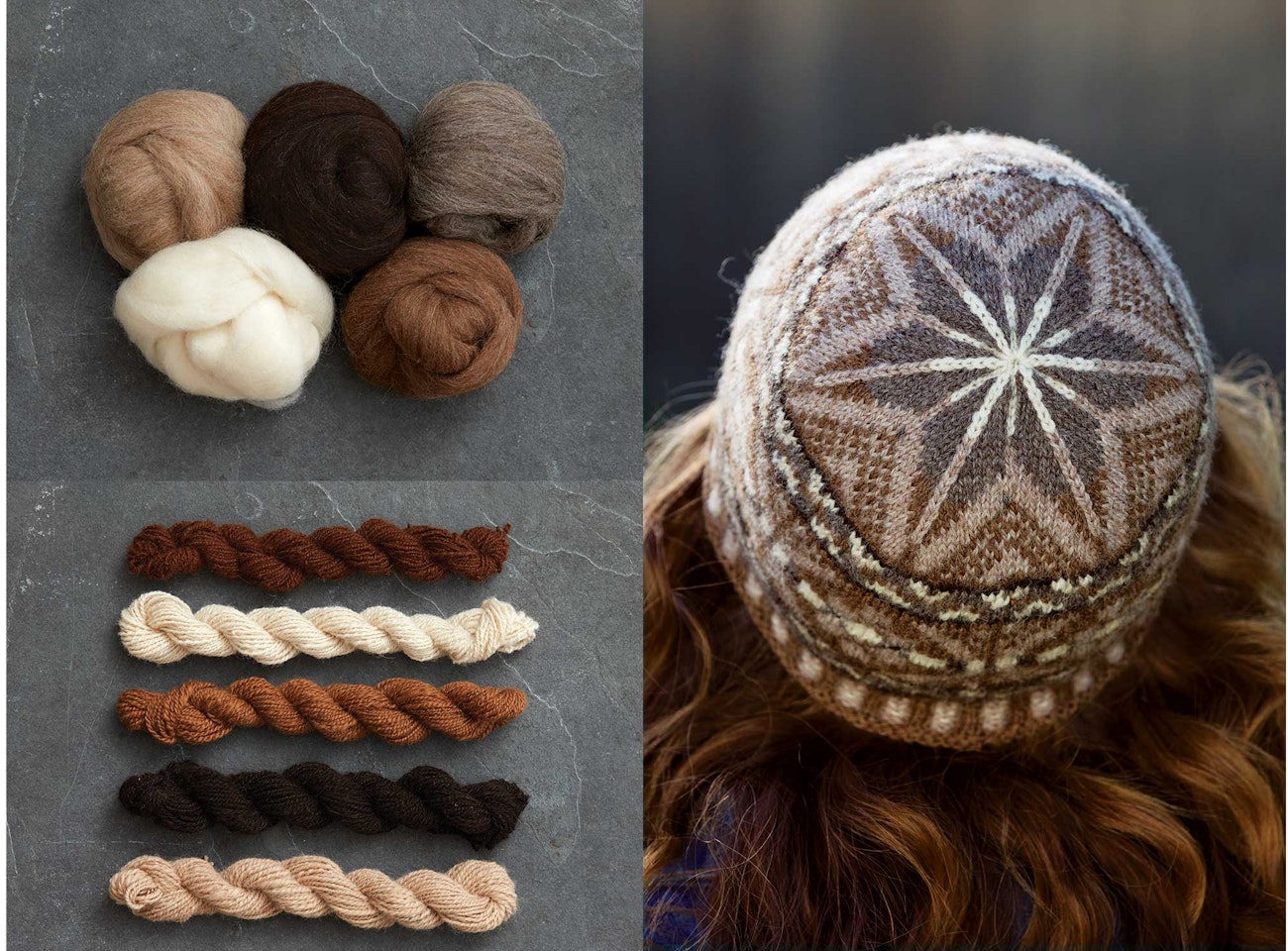 Kate selected Shetland wool combed top in five shades. When working with naturally colored
wool, you may find striking differences in wool character from one color to another. Photos by George Boe
Kate selected Shetland wool combed top in five shades. When working with naturally colored
wool, you may find striking differences in wool character from one color to another. Photos by George Boe
North Road Hat
Spin Off editor Kate Larson designed the North Road Hat after a visit to Jamieson & Smith in Lerwick, Shetland, using handspun yarn from 100% Shetland wool combed top purchased during her visit. Though Kate’s version uses a neutral palette, it would be stunning in a variety of hues. To create your own version, spin a sportweight 2-ply yarn or use Jamieson & Smith’s 2-ply Jumper Weight, which comes in more than 100 colors. Find the North Road Hat pattern here.
The Tam O’Shanter
The Tam O’Shanter is worked in a Fair Isle pattern using a 2-ply Jumper Weight from Jamieson's, which is their traditional yarn used for Fair Isle sweaters, tams, vests, and shawls. A tam o’shanter is a flat bonnet made of wool, similar to a beret. The distinctive shape is achieved blocking it on a wooden disc or plate. Find Eileen Lee's original pattern of the Tam O’Shanter pattern and a version of the tam worked in Jamieson’s of Shetland Spindrift in the Farm & Fiber Knits Library.
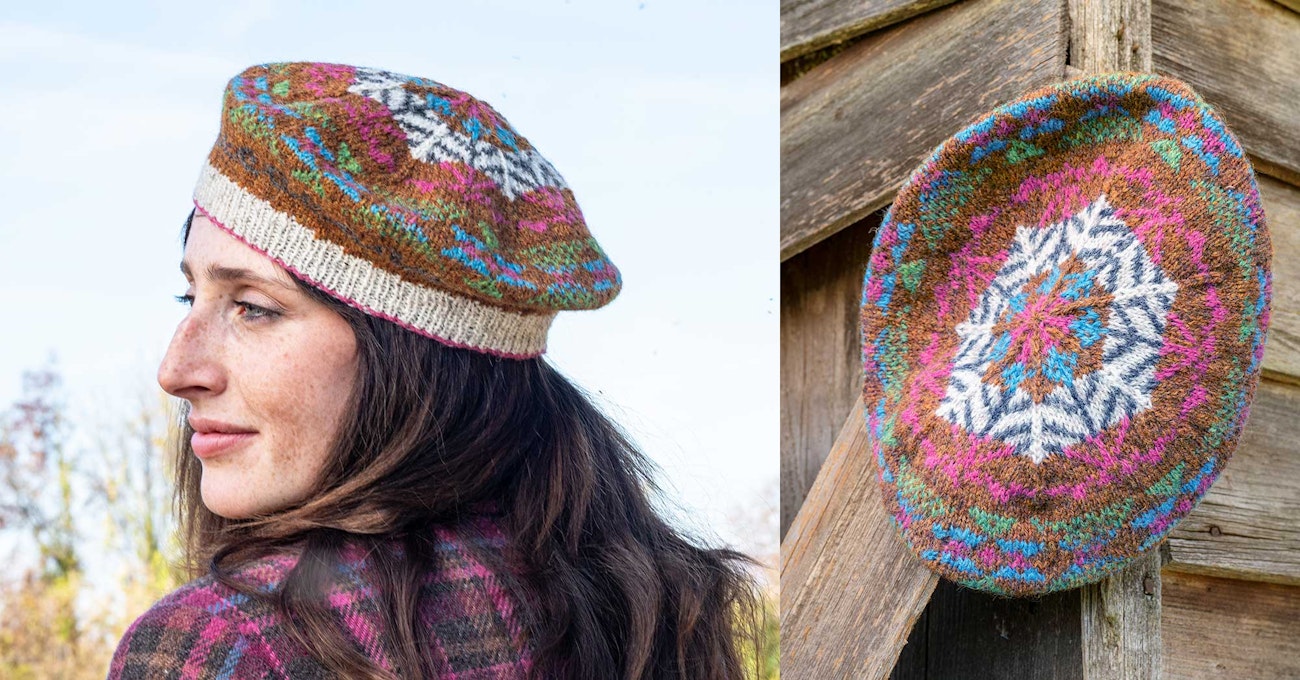 In a twist on Eileen Lee’s original Tam O’Shanter design, this begins with a loose cast-on in a contrasting color. Photos by Gale Zucker
In a twist on Eileen Lee’s original Tam O’Shanter design, this begins with a loose cast-on in a contrasting color. Photos by Gale Zucker
Regardless of which hat you choose to knit, these two designs will beautifully highlight your Shetland wool yarn.
Debbie Blair is the associate editor of Spin Off magazine. A lifelong crafter and avid reader, she finds her happy place reading and relaxing next to a mountain stream.
Kate Larson, editor of Spin Off, teaches handspinning around the country and spends as many hours as life allows in the barn with her beloved flock of Border Leicesters.


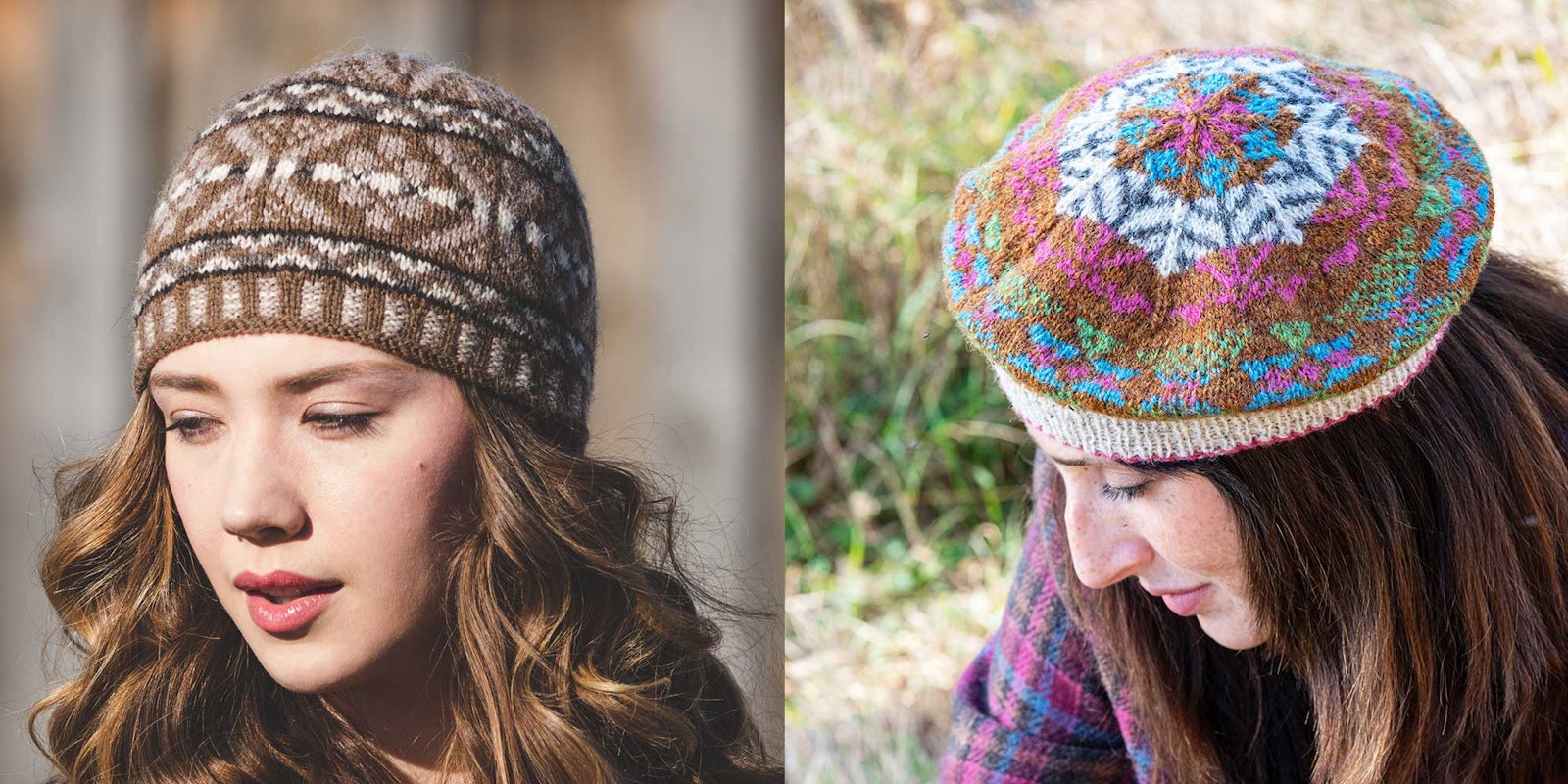
 At left, the background contrasts with all of the pattern colors; at right, the contrast between pattern and background colors varies. Photo at left by Joe Coca; at right by Gale Zucker
At left, the background contrasts with all of the pattern colors; at right, the contrast between pattern and background colors varies. Photo at left by Joe Coca; at right by Gale Zucker  Kate selected Shetland wool combed top in five shades. When working with naturally colored
wool, you may find striking differences in wool character from one color to another. Photos by George Boe
Kate selected Shetland wool combed top in five shades. When working with naturally colored
wool, you may find striking differences in wool character from one color to another. Photos by George Boe  In a twist on Eileen Lee’s original Tam O’Shanter design, this begins with a loose cast-on in a contrasting color. Photos by Gale Zucker
In a twist on Eileen Lee’s original Tam O’Shanter design, this begins with a loose cast-on in a contrasting color. Photos by Gale Zucker